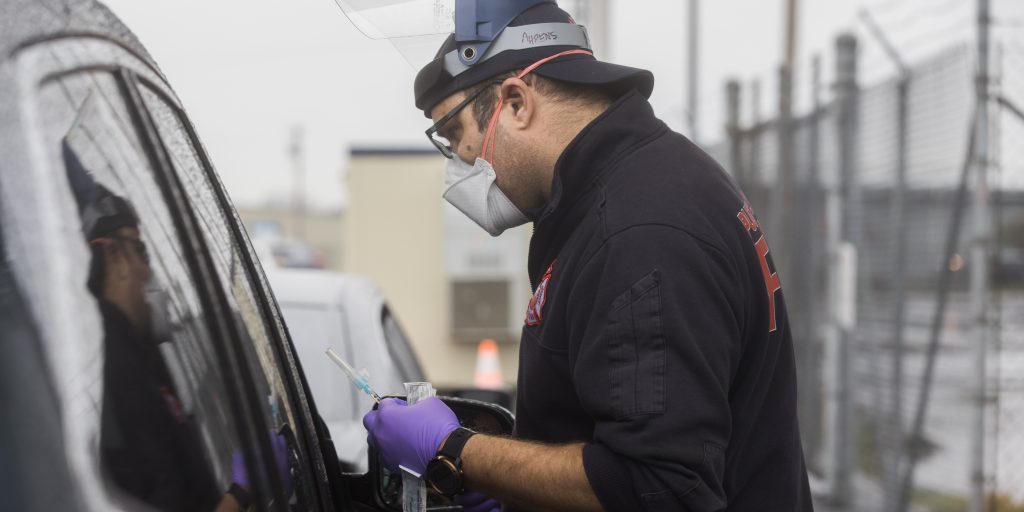2021 Crown Communities Award winner: King County’s enterprise-wide COVID-19 response
King County, Wash., covers more than 2,100 square miles in the Pacific Northwest, encompassing 39 cities, suburban areas, farmland and undeveloped natural lands that include mountains, forests and waterways. King County also was the country’s ground zero for COVID-19, with the first reported death happening in the Seattle suburb of Kirkland in February 2020, followed by an outbreak at a skilled care facility with more than 80 cases and at least 40 deaths.
King County Executive Dow Constantine stepped in to lead an enterprise-wide COVID-19 response to help slow the spread of COVID and save lives, and that response has been selected as a winner of the American City & County’s 2021 Crown Communities Award.
To fund the public health response, King County allocated more than $800 million in direct federal and state funds, including Coronavirus Relief Fund from CARES Act, Coronavirus Local Fiscal Recovery from American Rescue Plan Act (ARPA), anticipated FEMA reimbursement, federal grants from the CDC, and state awards. For the response to be successful, King County needed the cooperation of every department:
- Department of Community and Human Services (DCHS)
- Department of Executive Services (DES)
- King County International Airport
- Facilities Management Division
- Office of Emergency Management
- Finance and Business Operations Division
- Executive’s Office
- Metro Transit Department
- Public Health – Seattle & King County (PHSKC)
Departments collaborated to acquire and develop seven Isolation and Quarantine (I/Q) facilities and create policies and protocols for the nation’s first civilian COVID isolation and quarantine system. At the I/Q sites, people could isolate and recover from COVID if they couldn’t do it in their own home or were homeless. The I/Q programs implemented all COVID health and prevention guidance, provided 24/7 onsite medical and behavioral health care and triage service. The I/Q system has served more than 2,300 residents, 84 percent of whom reported living homeless.
At the start of the pandemic, King County estimated there were 1,700 people experiencing homelessness, and the existing shelter capacity was too small to keep people safe from COVID. DCHS helped develop a plan to reduce the spread by moving some entire shelter systems from congregate spaces into former hotels, which the county purchased through its Health Through Housing initiative.
To help transport everyone, Metro designed Transportation for Pandemic Response (TPR), a standalone program to move COVID-positive or symptomatic people to and from I/Q sites, medical facilities or other locations. Since its implementation in April 2020, TPR has provided 4,394 boardings.
Once vaccines were made available, King County set a goal to vaccinate a minimum of 70 percent of all adults through an ambitious strategy that focused on older adults and Black, Indigenous and people of color (BIPOC) in the community. They opened two COVID vaccination sites in south King County in February 2021 that initially served those at highest risk and were open to the public as more vaccine became available. The county also created mobile teams to serve people who were homeless, homebound, isolated or unable to travel; Community vaccination clinics were set up in collaboration with BIPOC community representatives and advocates in order to reach more people. By June 11, 2021, King County had reached its goal that 70 percent of eligible residents (12-plus years of age) across all races and ethnicities had completed their vaccine series.
The COVID pandemic also magnified the inequities faced by BIPOC have experienced in health care. King County declared racism a public health crisis and used that effort to develop programs with their cooperating departments to provide targeted help and information to the BIPOC community, as well as creating a COVID-19 Language Access Team (LAT) that hired community members as translation contractors to help guide residents who do not speak English.
Through their quick and focused response, today, King County has the lowest death rate due to COVID of the 20 largest metropolitan regions in the country, as well as one of the lowest incidence rates among the nation’s 50 most populous counties. King County’s efforts also were recognized by the New York Times. The place where COVID began in the United States became an area that can be held up as a national model.
“King County was ground zero for the nation’s COVID-19 pandemic. Led by Public Health – Seattle & King County, and supported by multiple county departments, we stood up a comprehensive pandemic response from day one, with a focus on equity to ensure those communities most impacted by COVID-19 had access to the resources that continue to keep everyone healthy during these difficult times,” Constantine said. “Our approach has worked—we succeeded in slowing the spread to preserve hospital capacity, reaching some of the highest vaccination rates in the nation, and saving thousands of lives. I am grateful to our dedicated employees, community partners, and the people of King County, who have worked together over the course of this pandemic to keep our community safe.”


















